Field Notes:
A Design Film Festival
in New York City
Date: 23 Oct 2020
Location: New York City, U.S
By: Felix Ng (Anonymous)
Location: New York City, U.S
By: Felix Ng (Anonymous)
This is the story of how a little idea, born in Singapore, landed in the world’s mecca of culture and creativity. And how a trip to New York City gave clarity to our purpose as a company.
![]()
There are global cities and creative cities, and then there is New York City. Much has been said about the place, so I won’t try to add more. Although competition from other cities has threatened its place, New York is still the global stage for culture, business, and creativity.
This was my third trip to New York. The previous was to attend the 99% Conference (now renamed to 99U) by Behance. This time around, it was all thanks to Duane King, creative director, designer, and writer. He’s also a friend, our role model, and one of the nicest people I have ever met.
![]()
Duane invited A Design Film Festival to New York as part of the Point Oh! Brooklyn 1.0 Conference. Held at The Irondale Center in Brooklyn from 8 - 10 October 2015, the 3-day festival had the simple goal of inspiring those who were making a difference: people who make things better as they make better things. The event was conceptualised, curated, and led by Duane, the creative director and co-founder of Huge/KingCoyle, a creative agency he co-founded with Ian Coyle, which was also the Portland outpost for Huge Inc.
![]()
The conference featured speakers from design, culture, and business such as Jennifer Daniels (Graphics Editor of the New York Times), comedian, writer and author Tamer Kattan, Casey Gerald (co-founder of MBAs Across America), and more. Duane opened the conference with an introduction on why he and the team created the event. What he spoke about that morning has been a question I ask myself regularly ever since. “Why do you design?” Some of you might find this a banal question, but it really does matter to consider what guides everything that we do. It is especially critical at a time when the world is drowning in content and things that compete for our attention every waking moment.
It is easy to lose sight of why we started making things. And difficult to develop our own philosophy and stick with it, especially when we struggle to keep up with the sea of content and options — from how-to books and online media on creativity and culture, and independent voices on social media with quick hacks with lists on best practices — that crash on us like waves. Everyone has a point of view. (I realise the irony of this field note…) A strategist we work with describes this dilemma perfectly. “It is easy to confuse information with insight. Information is data. Insight is actionable.”
So why do you design? (Feel free to replace “design” with the work that you do.)
While you ponder on that question, here are photos from the event, courtesy of Huge/KingCoyle.

There are global cities and creative cities, and then there is New York City. Much has been said about the place, so I won’t try to add more. Although competition from other cities has threatened its place, New York is still the global stage for culture, business, and creativity.
This was my third trip to New York. The previous was to attend the 99% Conference (now renamed to 99U) by Behance. This time around, it was all thanks to Duane King, creative director, designer, and writer. He’s also a friend, our role model, and one of the nicest people I have ever met.
Why do you do what you do?

Duane invited A Design Film Festival to New York as part of the Point Oh! Brooklyn 1.0 Conference. Held at The Irondale Center in Brooklyn from 8 - 10 October 2015, the 3-day festival had the simple goal of inspiring those who were making a difference: people who make things better as they make better things. The event was conceptualised, curated, and led by Duane, the creative director and co-founder of Huge/KingCoyle, a creative agency he co-founded with Ian Coyle, which was also the Portland outpost for Huge Inc.

The conference featured speakers from design, culture, and business such as Jennifer Daniels (Graphics Editor of the New York Times), comedian, writer and author Tamer Kattan, Casey Gerald (co-founder of MBAs Across America), and more. Duane opened the conference with an introduction on why he and the team created the event. What he spoke about that morning has been a question I ask myself regularly ever since. “Why do you design?” Some of you might find this a banal question, but it really does matter to consider what guides everything that we do. It is especially critical at a time when the world is drowning in content and things that compete for our attention every waking moment.
It is easy to lose sight of why we started making things. And difficult to develop our own philosophy and stick with it, especially when we struggle to keep up with the sea of content and options — from how-to books and online media on creativity and culture, and independent voices on social media with quick hacks with lists on best practices — that crash on us like waves. Everyone has a point of view. (I realise the irony of this field note…) A strategist we work with describes this dilemma perfectly. “It is easy to confuse information with insight. Information is data. Insight is actionable.”
So why do you design? (Feel free to replace “design” with the work that you do.)
While you ponder on that question, here are photos from the event, courtesy of Huge/KingCoyle.

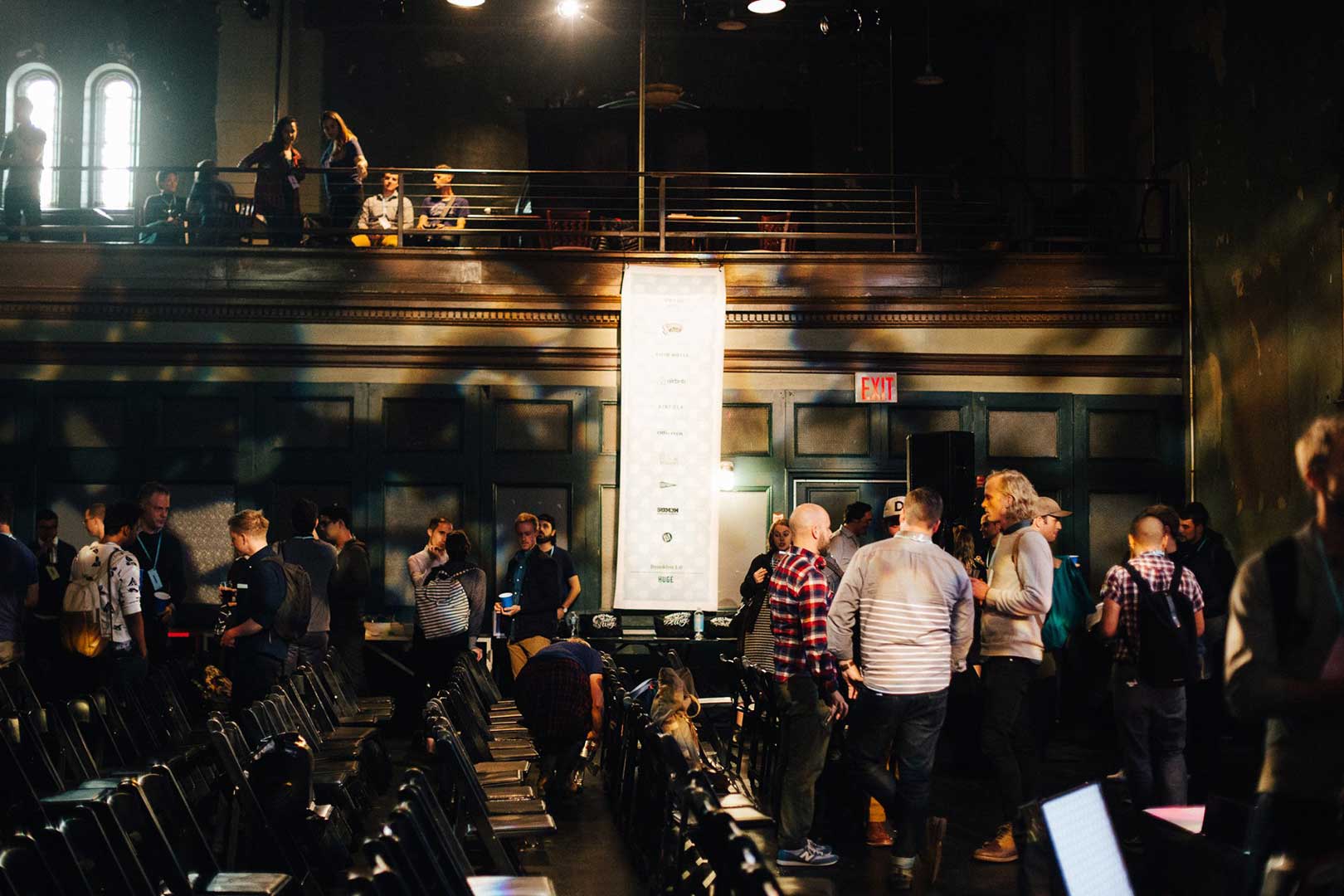


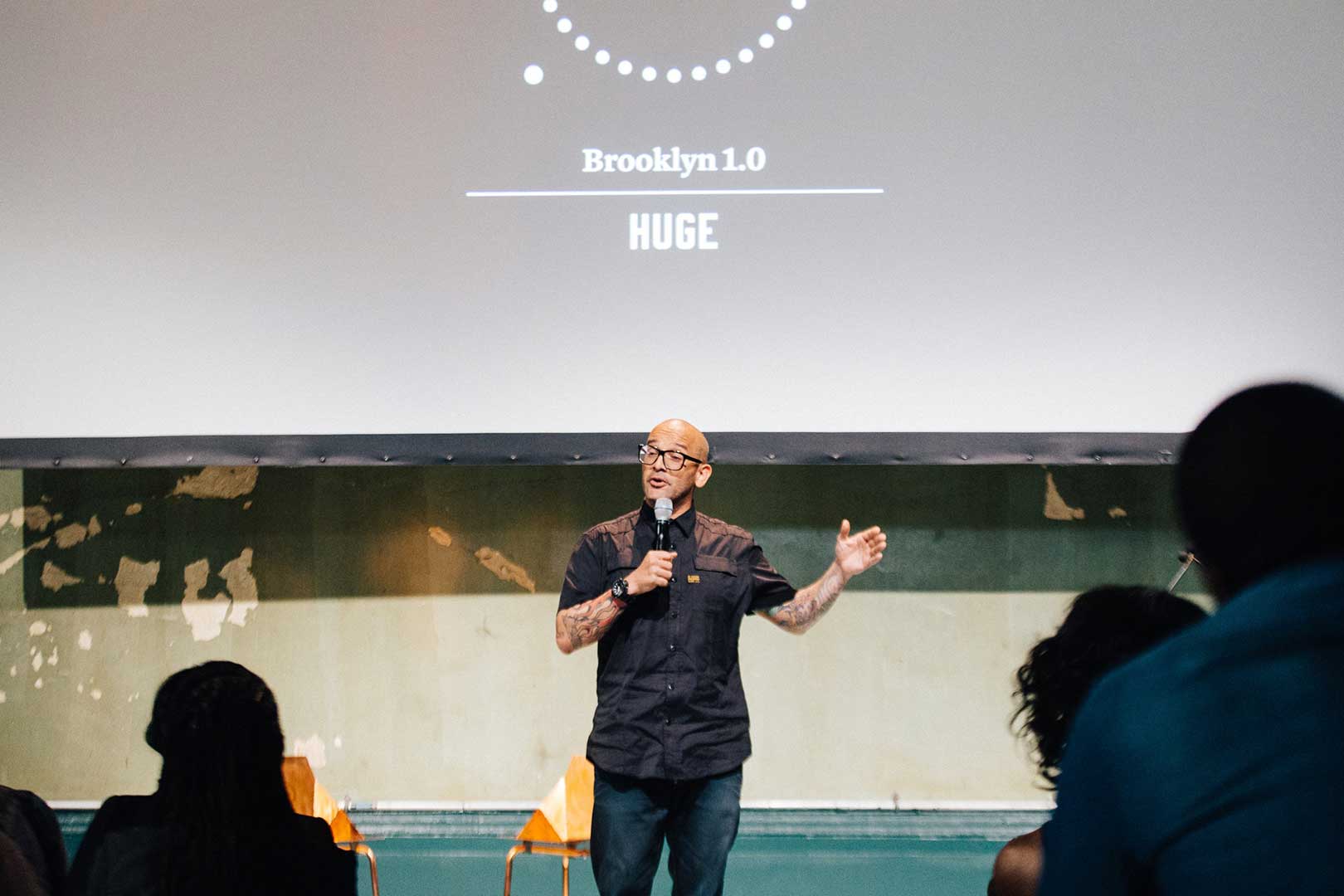




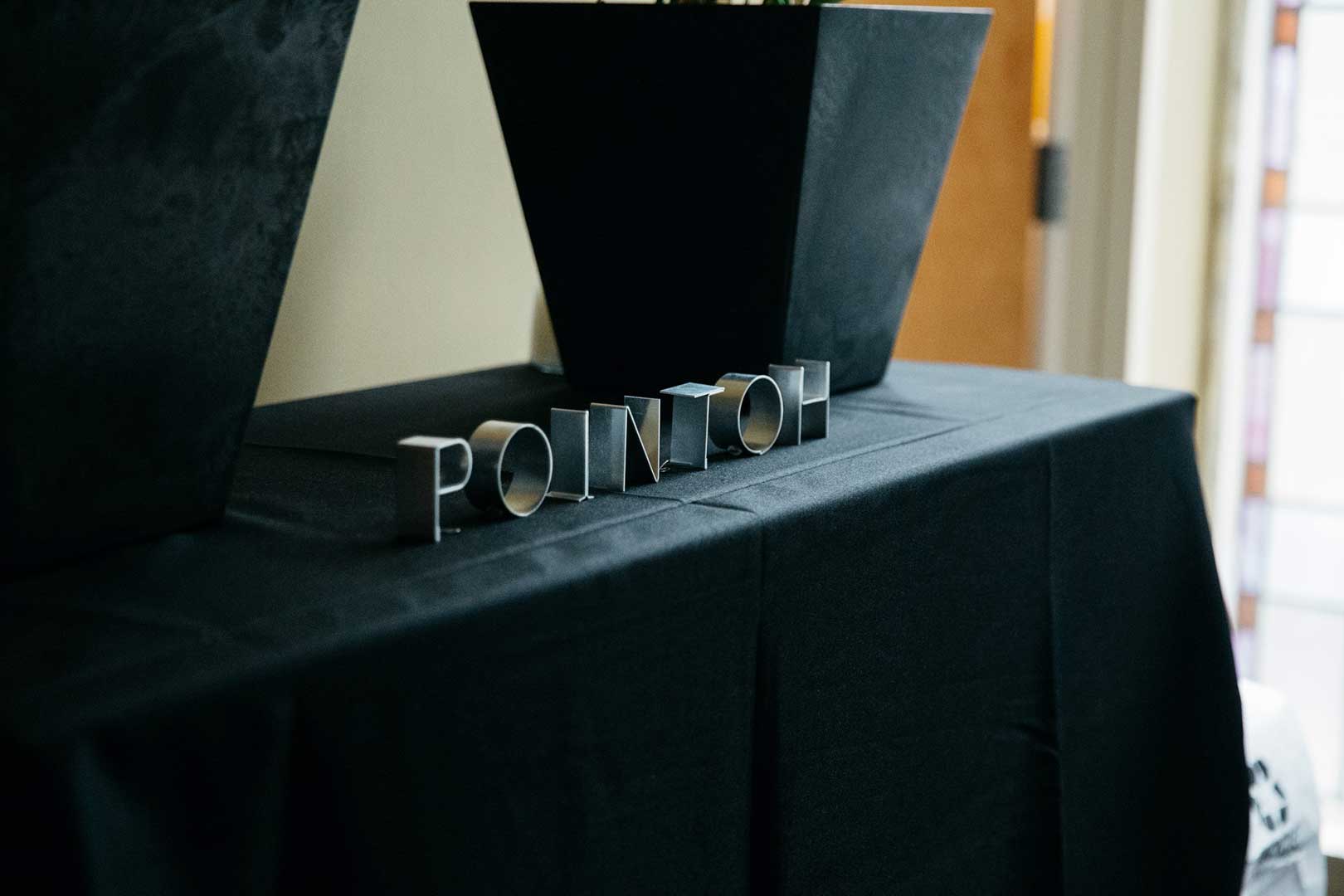


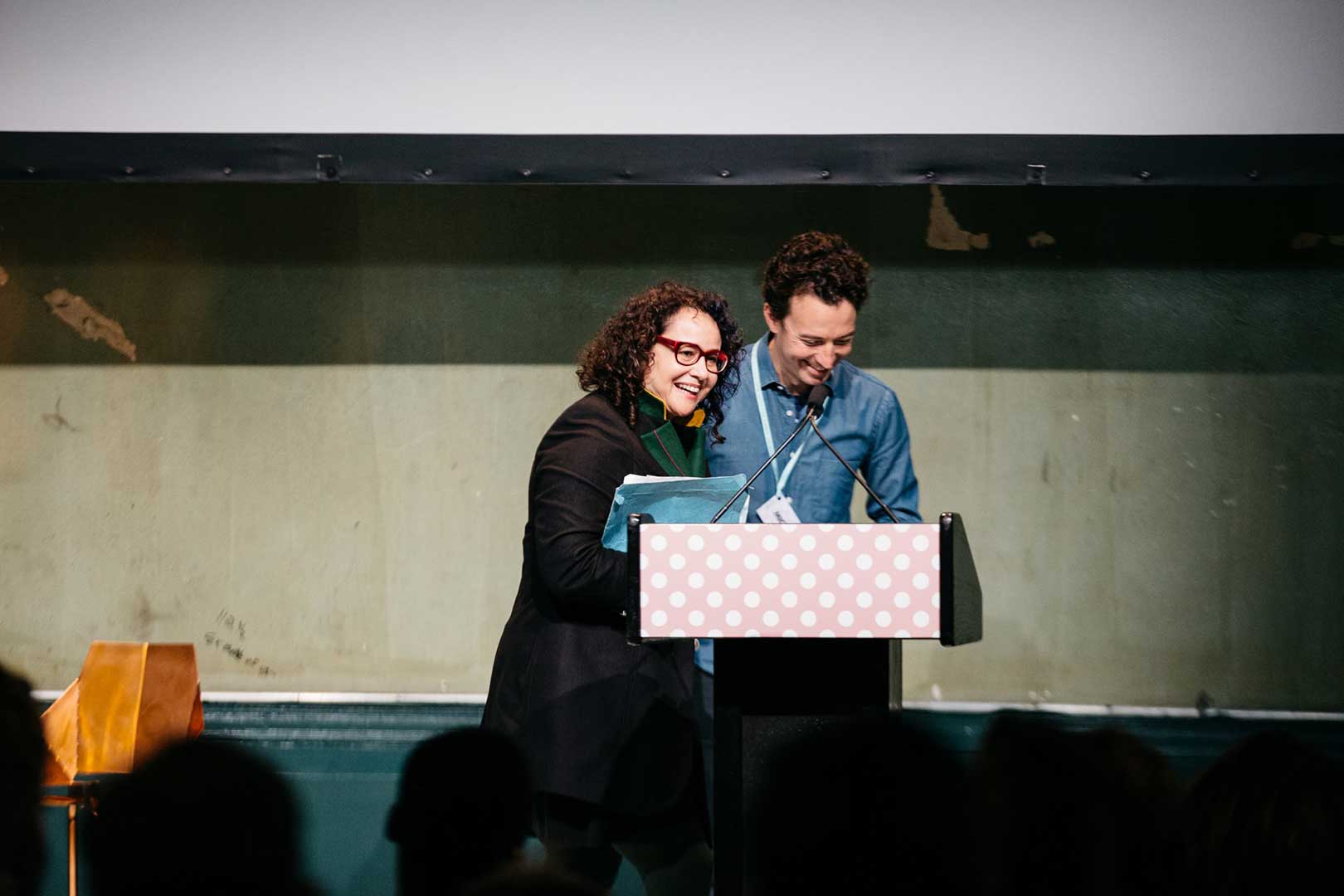




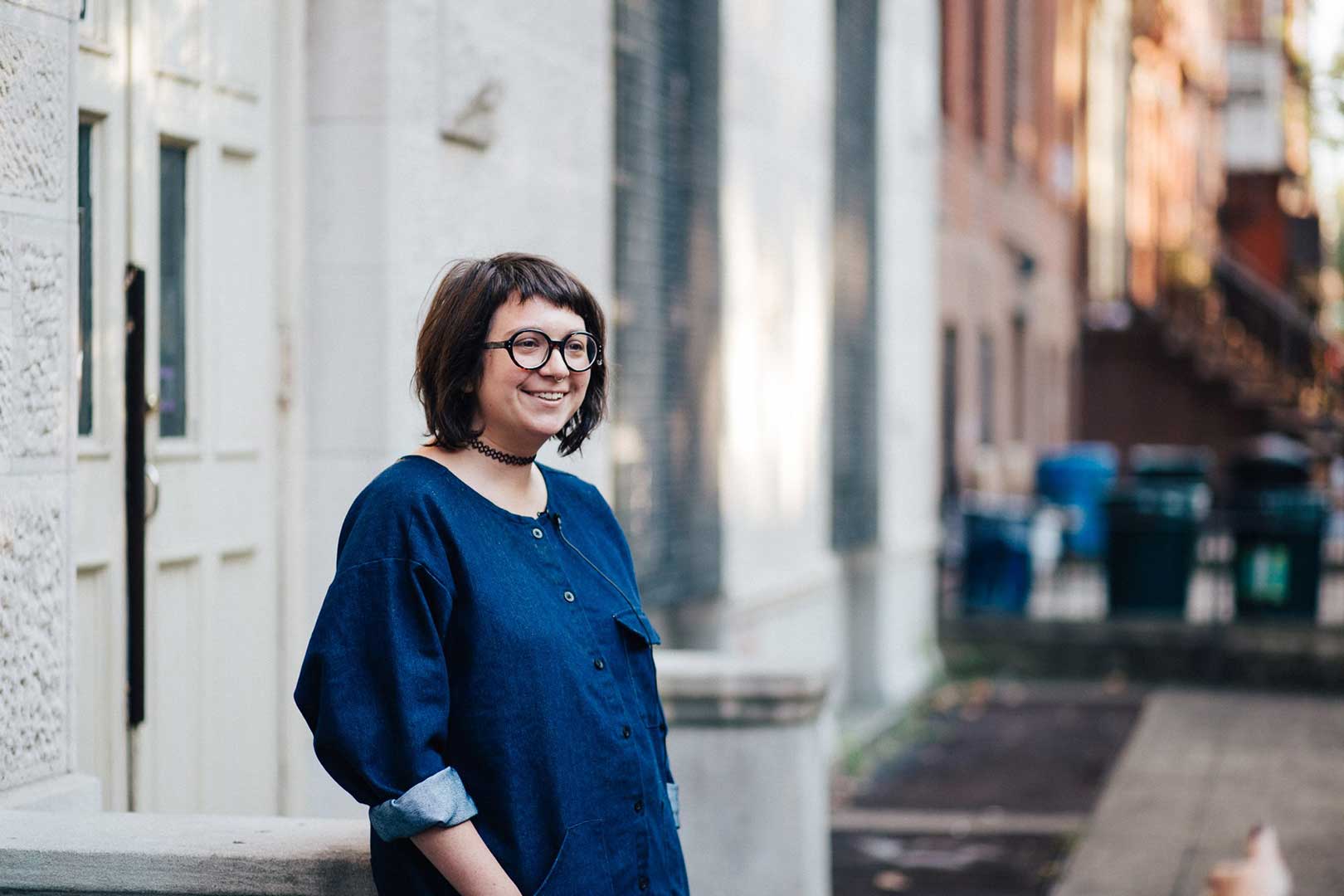



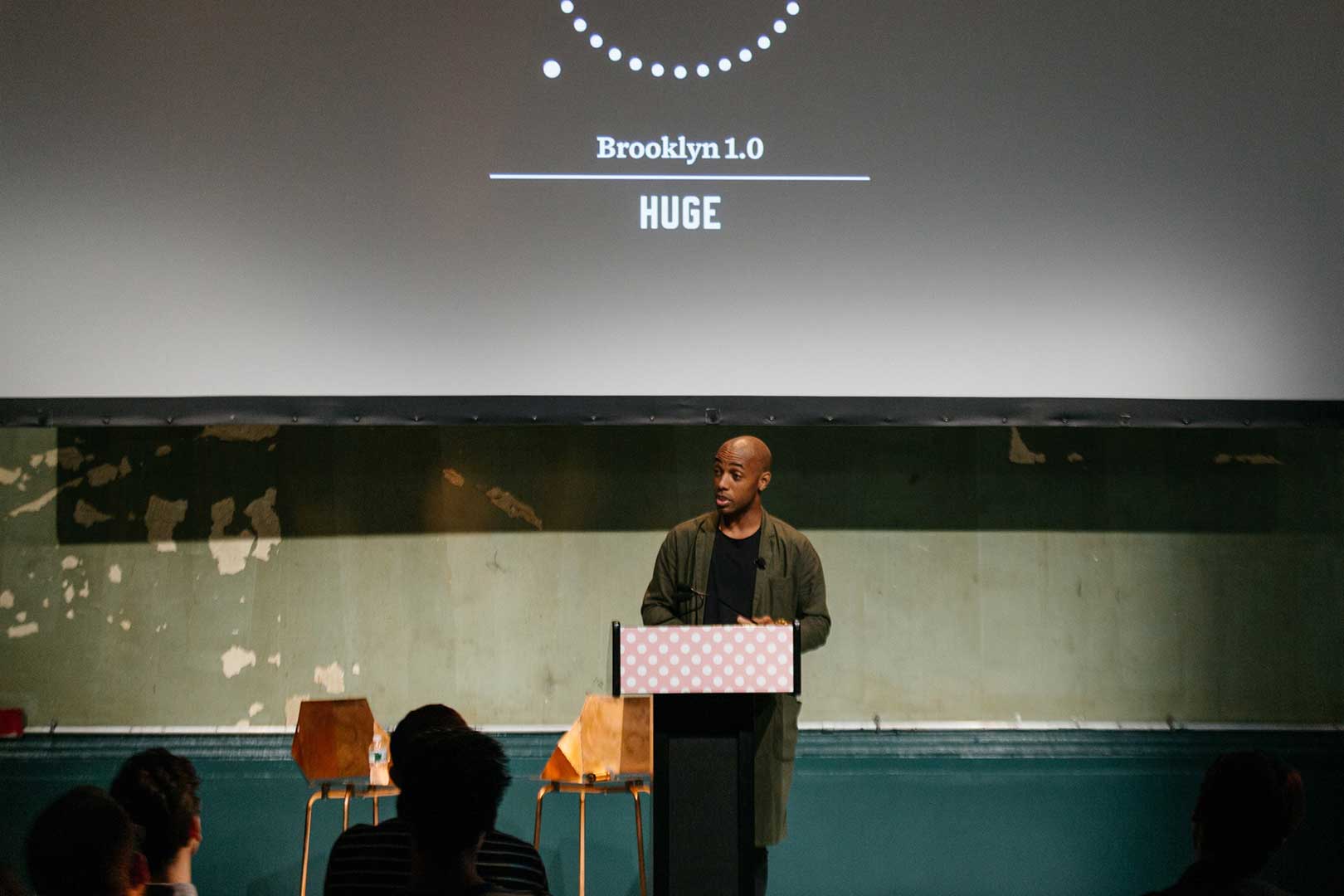





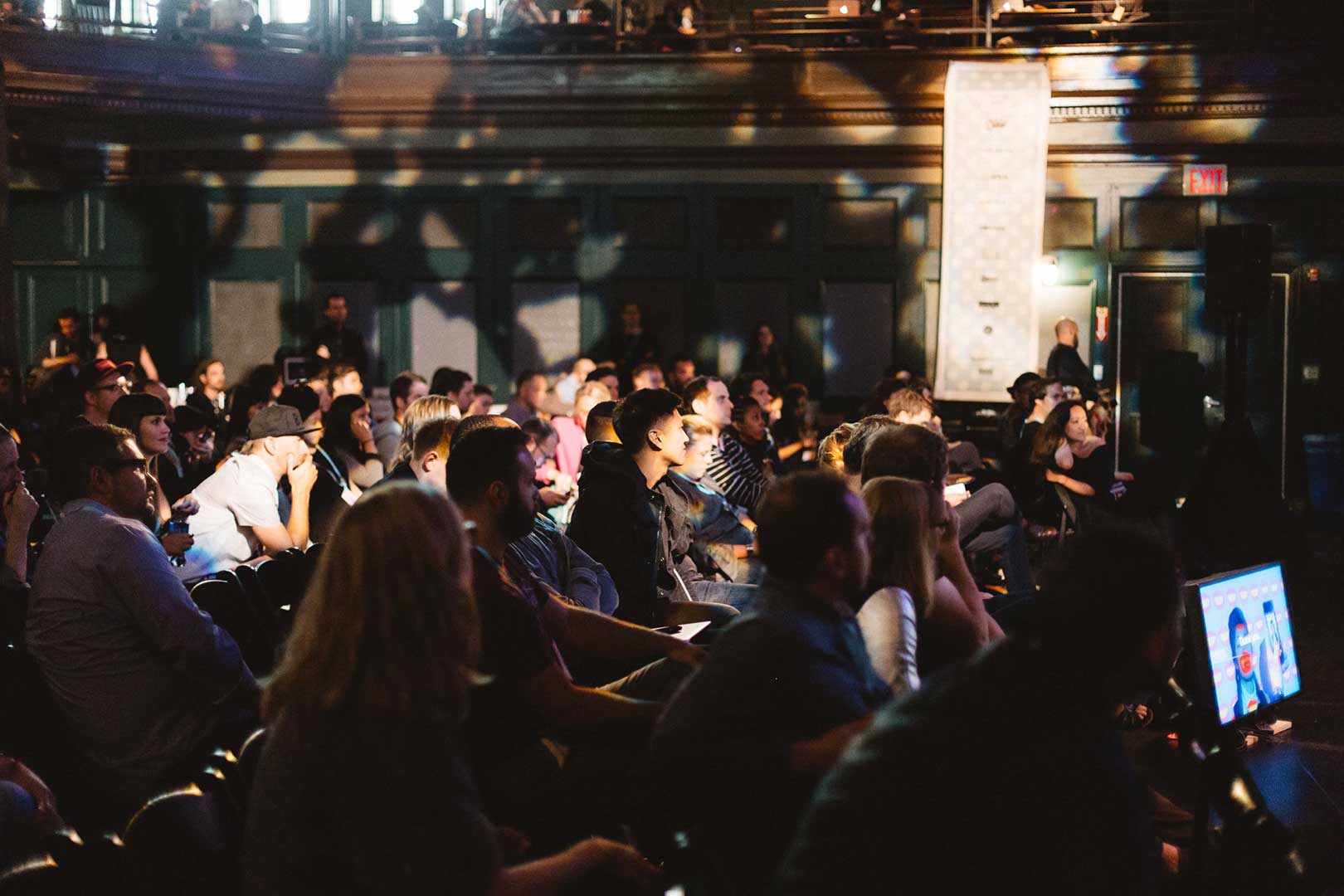


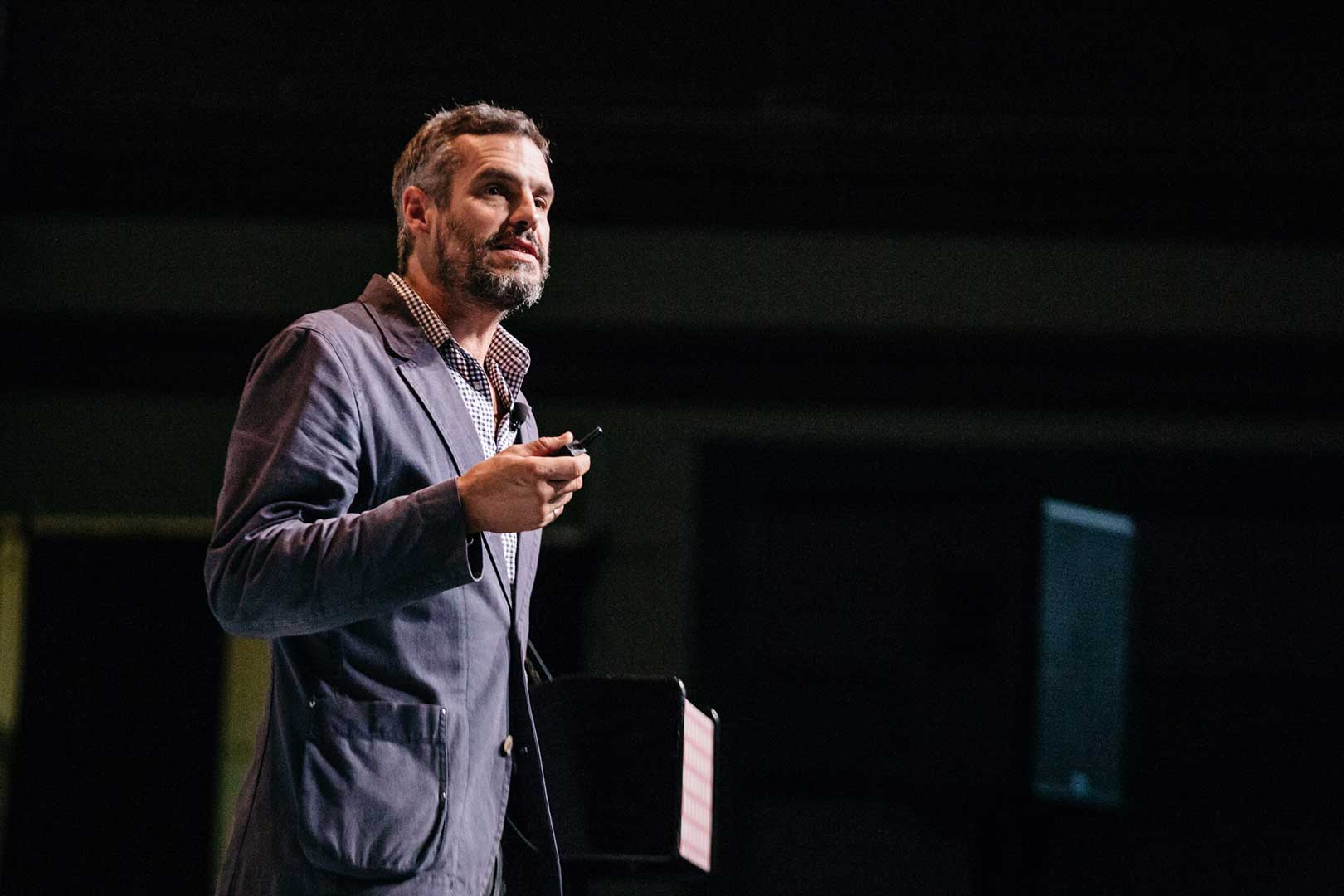

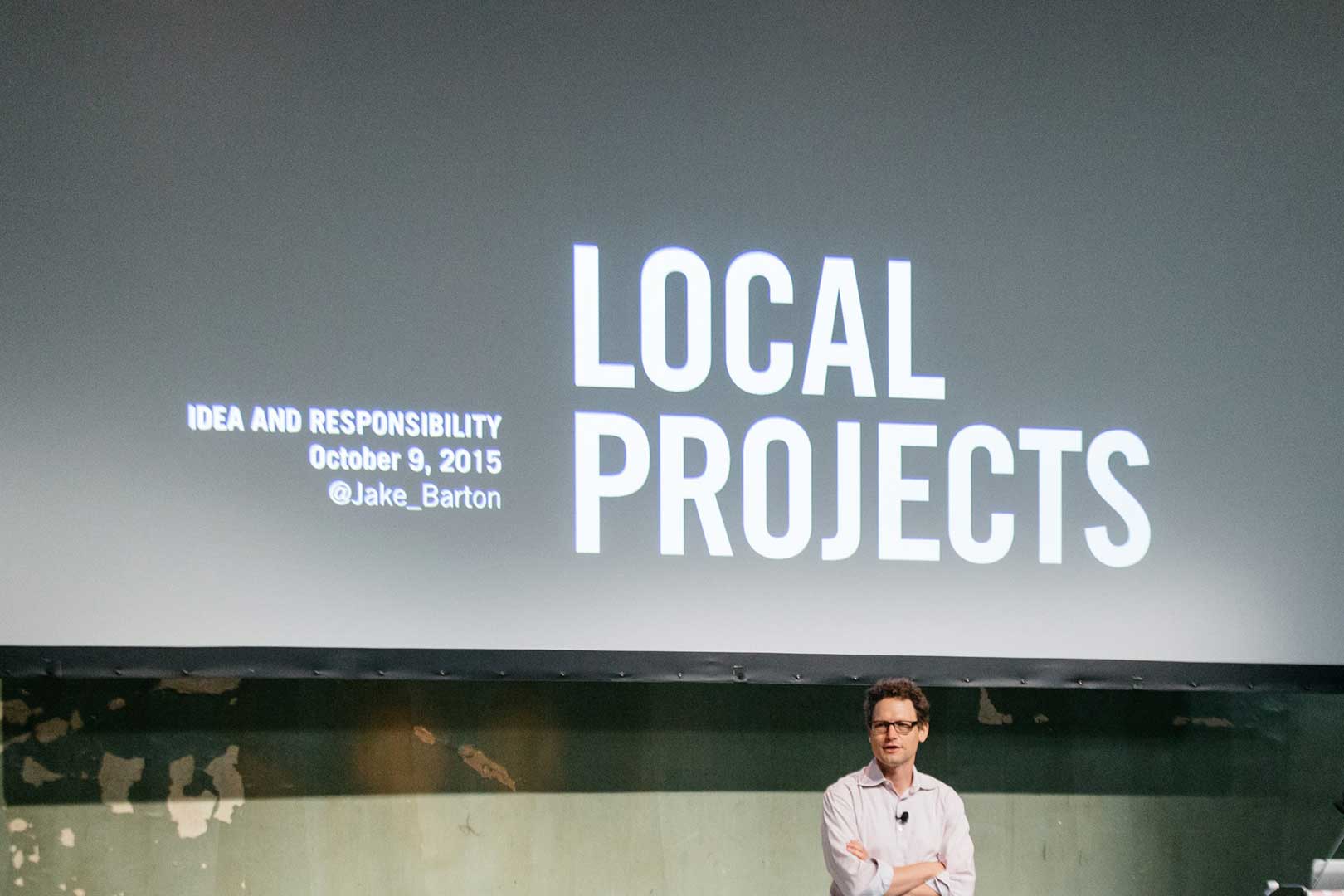





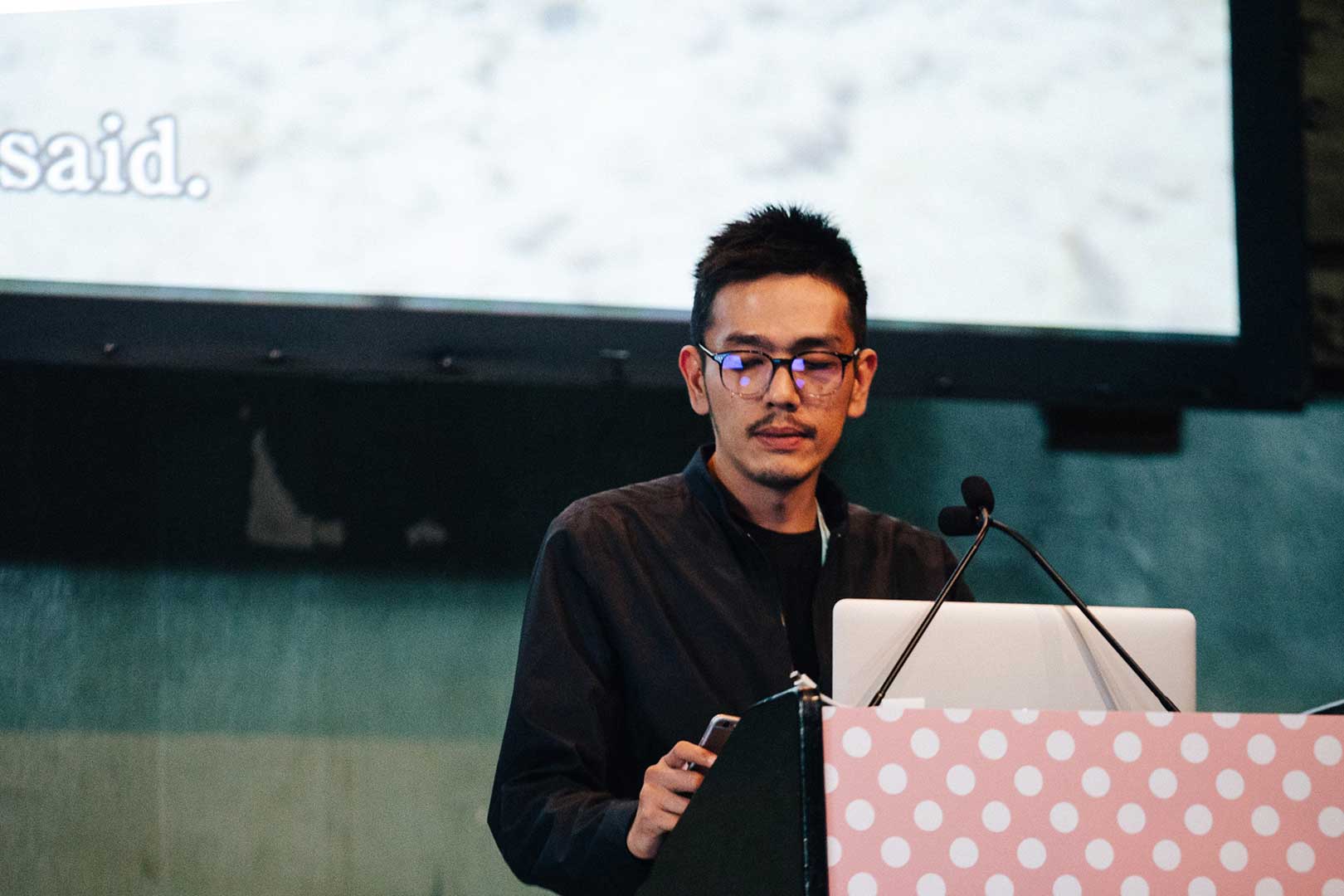

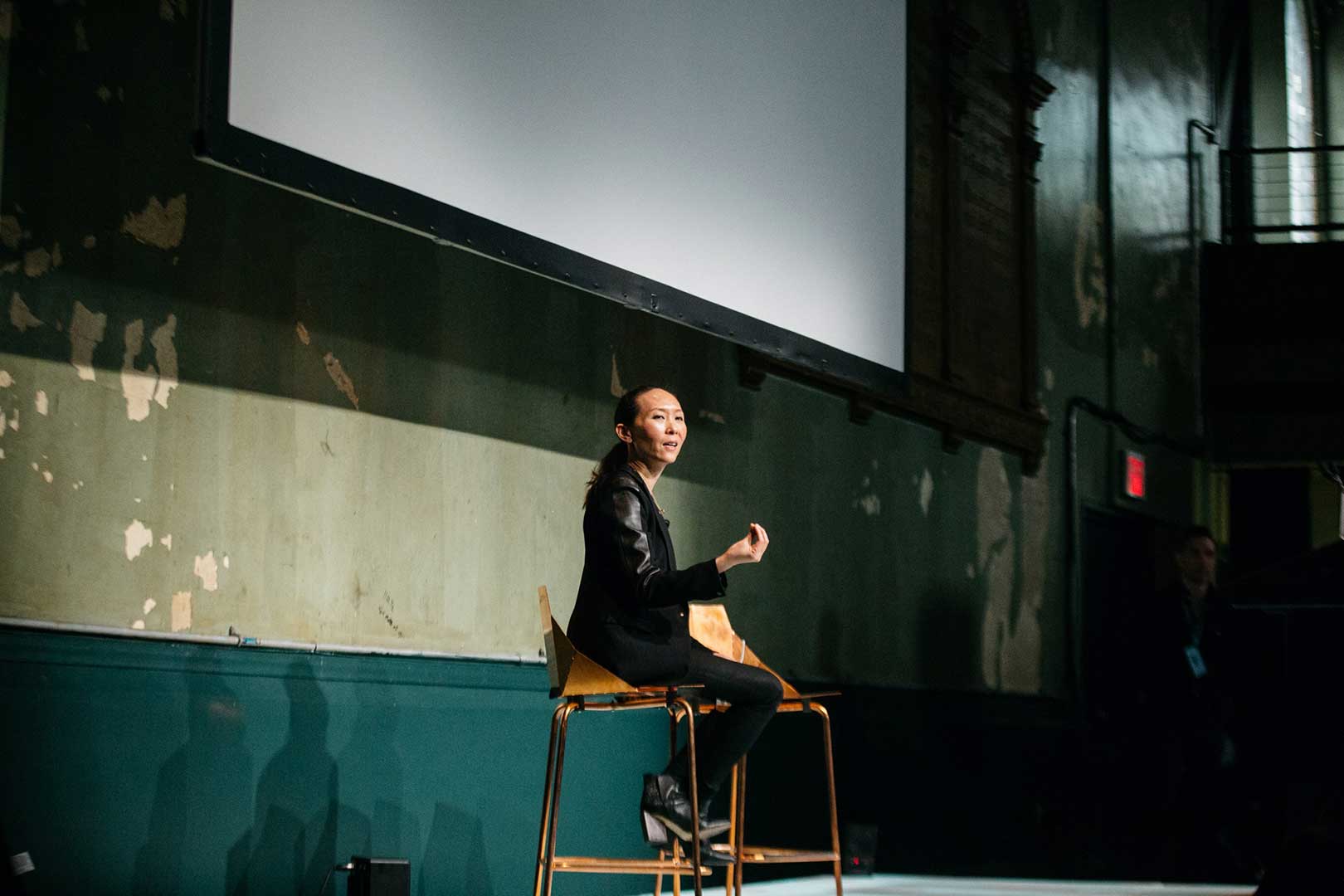

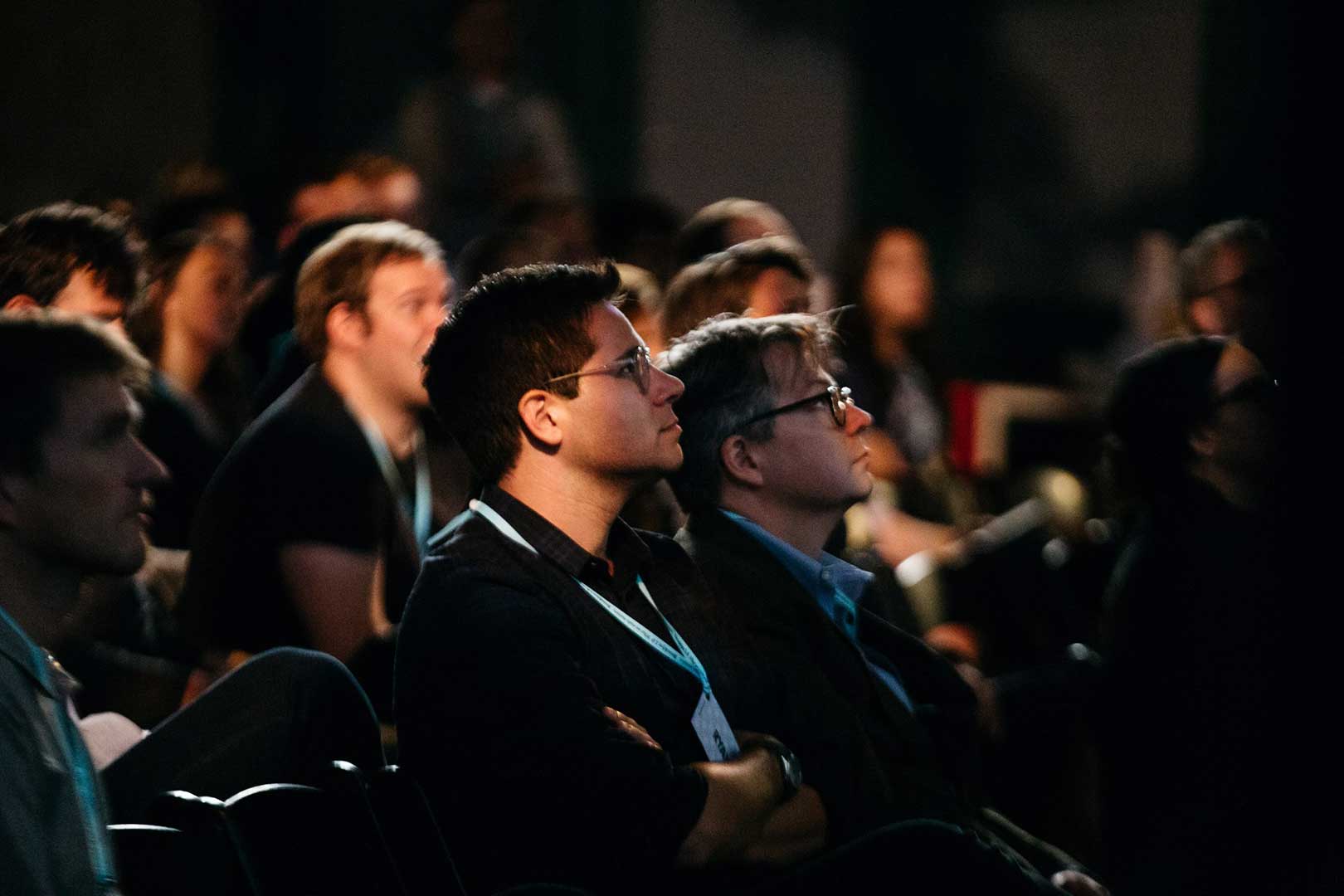




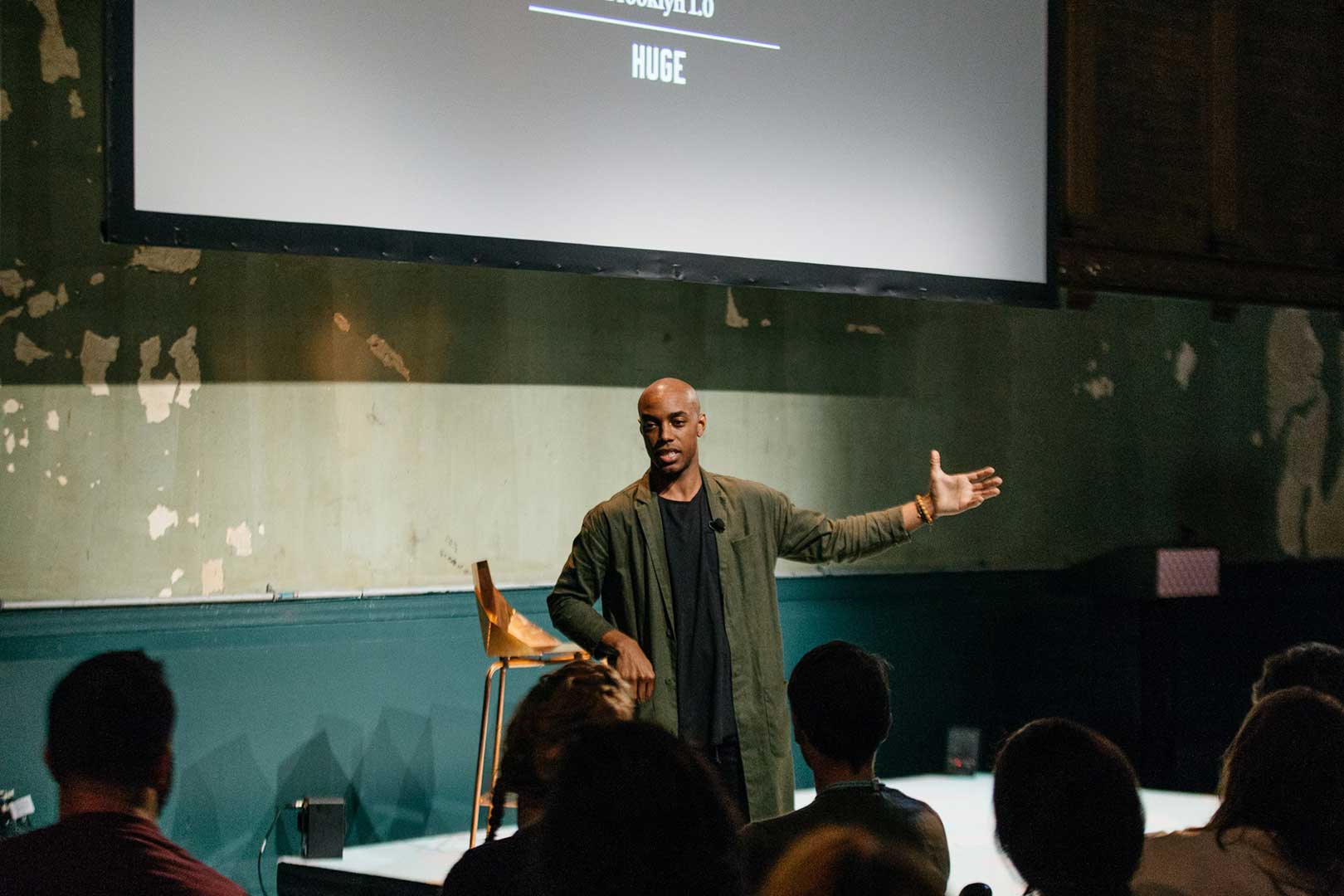



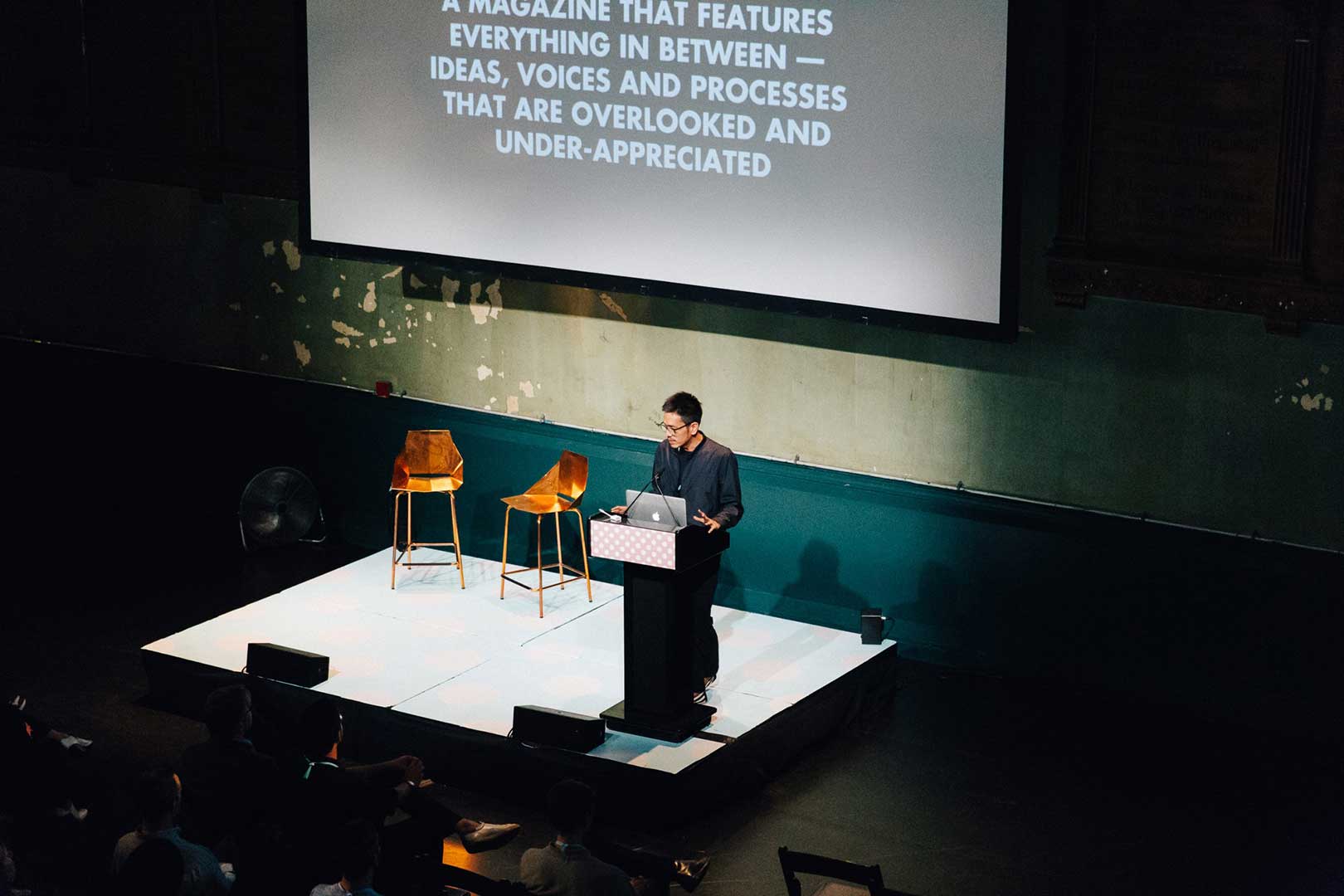

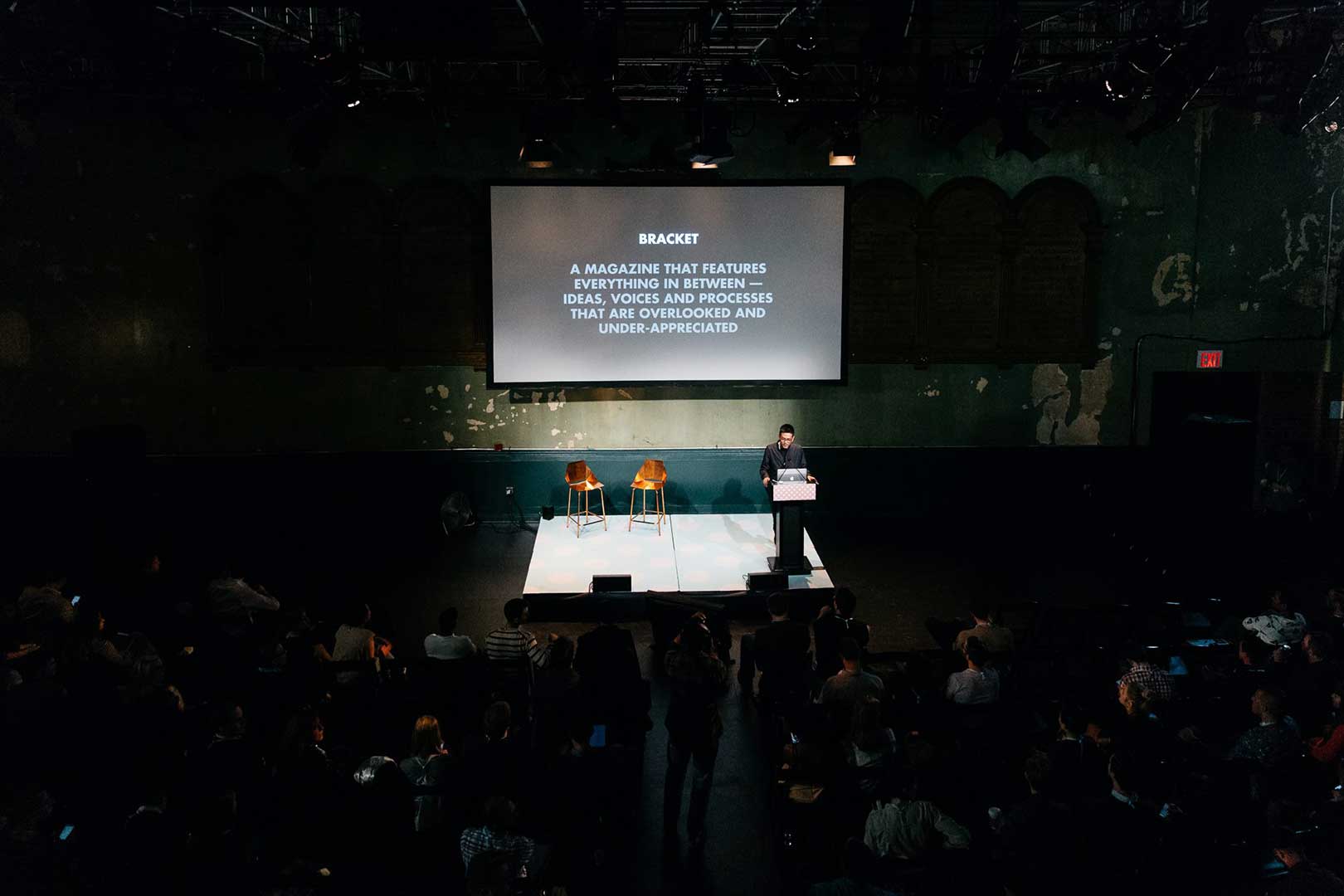

Proactive v.s. Reactive
On the same trip, I met up for dinner with Koichiro Tanaka, the creative director and founder of Projector Japan. Ko was responsible for the international breakout of UNIQLO, with his iconic and ingenious idea for UNIQLOCK, a clock plug-in for bloggers to use on their website.
Ko had moved to the US to help grow and launch Japanese brands internationally, with New York as the launch pad. Amongst the many things we talked about over dinner, Ko shared what he thought about our work: “I like your approach. It is proactive.” and went on to explain, “Most agencies are reactive. They respond to a brief. A client comes to them with a problem or business goal. Their approach is to respond to the problem that the client defined.”
Proactive or Reactive. Finding opportunities and the right problems to solve or responding to a brief presented by a client where the problems have been defined. While there has been much said about the value of personal projects, this was the first time that they were presented as proactive and reactive energies driving what we do and why. This was a profound insight.
At that time, we were about to launch the first edition of A Design Film Festival in Singapore and were curating short films to feature alongside the main films. I wrote to Sebastian asking if he would be keen for us to feature his work at DFF, and he said yes! Since then, Sebastian has been the main driving force behind the opening titles for A Design Film Festival 2011, and 2014 - 2019. We have also collaborated on motion graphics and in-store animations for the UNIQLO Global Flagship Stores in Singapore and Manila, and even an opening title sequence for Channel News Asia.
Sebastian flew from Freiburg to New York City to attend the conference and film festival. Even though we had only ever spoken over email and video calls, we hit it off easily when we finally met in person. One of the most awesome things about the internet is the ability to connect with and collaborate on projects with anyone anywhere in the world. And when you finally have a chance to meet in person, that collaboration goes further and grows into a friendship. I am proud to call Sebastian a friend, and to have had the chance to work together on projects that we love.
In 2015, Sebastian won a Type Directors Club award for his work on the opening titles for A Design Film Festival 2014. He surprised me during the trip with a copy of the award certificate. Few awards mean more than this. It is a reminder of how our work can be so much more when it involves collaborating with others and when we can help them do their best work possible.
And that is why we continue to do what we do.
Not to be the best in the world, to win awards, or to have a great portfolio. But to find the right problems to solve, and to help others do their best work possible.
On the same trip, I met up for dinner with Koichiro Tanaka, the creative director and founder of Projector Japan. Ko was responsible for the international breakout of UNIQLO, with his iconic and ingenious idea for UNIQLOCK, a clock plug-in for bloggers to use on their website.
Ko had moved to the US to help grow and launch Japanese brands internationally, with New York as the launch pad. Amongst the many things we talked about over dinner, Ko shared what he thought about our work: “I like your approach. It is proactive.” and went on to explain, “Most agencies are reactive. They respond to a brief. A client comes to them with a problem or business goal. Their approach is to respond to the problem that the client defined.”
Proactive or Reactive. Finding opportunities and the right problems to solve or responding to a brief presented by a client where the problems have been defined. While there has been much said about the value of personal projects, this was the first time that they were presented as proactive and reactive energies driving what we do and why. This was a profound insight.
The Internet is Awesome
It was also during this trip when I finally had a chance to meet one of our long-time collaborators in person. Sebastian Lange is a creative director of an agency in Freiburg, Germany, and works on motion graphics and animation in his free time. We connected when I came across his work online on Flickermood 2.0, a typographic motion video that he made.At that time, we were about to launch the first edition of A Design Film Festival in Singapore and were curating short films to feature alongside the main films. I wrote to Sebastian asking if he would be keen for us to feature his work at DFF, and he said yes! Since then, Sebastian has been the main driving force behind the opening titles for A Design Film Festival 2011, and 2014 - 2019. We have also collaborated on motion graphics and in-store animations for the UNIQLO Global Flagship Stores in Singapore and Manila, and even an opening title sequence for Channel News Asia.
Sebastian flew from Freiburg to New York City to attend the conference and film festival. Even though we had only ever spoken over email and video calls, we hit it off easily when we finally met in person. One of the most awesome things about the internet is the ability to connect with and collaborate on projects with anyone anywhere in the world. And when you finally have a chance to meet in person, that collaboration goes further and grows into a friendship. I am proud to call Sebastian a friend, and to have had the chance to work together on projects that we love.
In 2015, Sebastian won a Type Directors Club award for his work on the opening titles for A Design Film Festival 2014. He surprised me during the trip with a copy of the award certificate. Few awards mean more than this. It is a reminder of how our work can be so much more when it involves collaborating with others and when we can help them do their best work possible.
And that is why we continue to do what we do.
Not to be the best in the world, to win awards, or to have a great portfolio. But to find the right problems to solve, and to help others do their best work possible.
